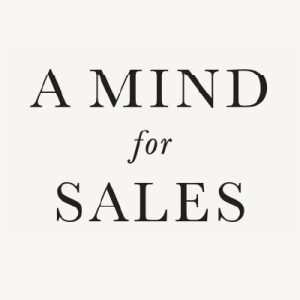Let’s talk for a moment about how to prospect when you don’t have good leads? I wrote the books, A Mind for Sales and High Profit Prospecting that both talk about this. One of the big challenges is that ultimately, your leads are dependent upon your mind for sales. Let me walk you through 10 things that you can do whenever you feel that you don’t have good leads.
Video: How to Prospect When You Don’t Have Good Leads –
1. Don’t Think Quantity
Often, people think they don’t have good leads, because they don’t have quantity; they don’t feel like they have enough leads. It doesn’t matter what goes into the top of the pipeline, only what comes out the bottom. You want to ask yourself if you have the right leads. Quantity does not mean quality – they are different.
2. Know Who Your Best Customers Are
Don’t overlook your current customers. I see too many salespeople chasing new business and failing to realize the additional business deck will come from existing customers. This may be either additional departments, additional divisions, other people, and/or other connections that existing customers have.
3. What’s Your POE?
This is your “point of entry”. Let’s break POE down into two ways.
First, point of entry is the opening question. So, what’s the statement? What are you doing to engage the customer / lead, before they are even a prospect? Many times, people say they don’t have good leads because they’re choking. They are choking because they can’t qualify the leads they do have. Ask yourself this: am I engaging my leads fast enough? Am I engaging them properly?
The second half of POE includes the product or service that you’re leading with. In a lot of cases, leads just go away because you confuse them right out of the shoot because they’re too complex. That is why you want to lead with something very simple, something simplistic, something that’s easy for the customer to get into immediately.
4. Old Customers
Don’t ever think for a moment that you can’t go back to old customers. Keep in mind that old customers come in multiple forms. I will share about two types of old customers. There are those that simply walk away from you; they left you for somebody else. Or, maybe they are old customers because we screwed up; we did something wrong. Either way, go back and sit down with them. Yes, they may have gone with somebody else; however, how do you know that they’re happy? Reach out to them. Start a conversation.
The other type of old customer is one that left you before you feel like you screwed up. You may feel like you screwed up, but did they feel you screwed up? Take the time to really sit down and think about how you screwed up. Ask yourself hard questions. Then, reach out and ask them if they thought you screwed up. You won’t know until you talk to them.
5. Old Leads
I hear salespeople sit there and say, “Well, those were leads we worked a couple years ago, and they didn’t work, so they won’t work now either.” You know what? Things change, people change. You may have blown them off back then because you didn’t think they were worthwhile, yet you don’t know what they’re worth today. Go back and talk to them. Take a look at those old leads and see how they line up with your ICP, “Ideal Customer Profile.” Undoubtedly, you’ll find at least a slice of them that you can pull back in and begin reworking.
6. Time Blocking
You can’t sit there and expect to prospect, unless you make the time to prospect. People always sit there and say, “I don’t have time to prospect because I’m doing this, I’m doing this, I’m doing this.” I get it. Trust me, it’s easy to get caught up doing this and that. I promise you will not prospect unless you block the time for it. Just now, today, I had to block time to prospect. I actually love prospecting, but it’s still easy for me to get caught up doing other things. I always have to set aside time in my calendar to make outbound phone calls as well as follow-up on leads.
7. Referral Program
What’s your referral program look like? Now, I’m not saying you have to put in place a complex program that has all kinds of gift certificates, prizes and things. No, that’s not it. Your referral program can be as simple as picking up the phone, calling people you know (i.e. current customers) and saying, “Hey, who do you know that might benefit from how I’ve helped you?” or “You know what I do? Who else might benefit what I do?” It’s amazing how much business is out there by way of just referrals. I did a video on this a couple of weeks ago on my YouTube channel. Go check it out at this link: https://www.youtube.com/watch?v=8lbv6SGRGqM&t=9s
8. Create a Lead Magnet
One of the reasons I wrote the book, A Mind For Sales, was to have a lead magnet. I get that that’s a pretty complex lead magnet. I’m certainly not saying you need to rush out and write a book. I am asking the question: what are you doing that’s bringing people to you? If you stop and think about it, your reputation actually arises before you do. When people read my book, they discover a little bit about me. In turn, knowing about me makes them more comfortable to pick up the phone and call me.
What’s your lead magnet? It may be webinars that you’re participating in, conferences that you’re speaking at, eBooks – whatever it is, but you have to create a lead magnet. Don’t become so obsessed with it though. This one leads me to my next one – number nine, which is social media.
9. Social Media
Social media is important; however, I don’t want you to become so obsessed with this and creating a lead magnet that you fail to do the others. I put these two at the end, because too many people tell me, “Well, if I just put enough blog posts out there, if I just comment on everybody’s thing out there on LinkedIn and Facebook and everything else, I’ll get plenty of business.” That is not true. You may get a lot of clicks and likes, but remember that you can’t take clicks and likes to the bank.
Just a couple hours ago, I had a conversation with a gentleman who called me asking for assistance. He was trying to market a product, so I asked him, “What’s your social media presence?” His response was, “Well, I’m very private, I don’t have one.” Sure enough, he was right. I went and checked out his LinkedIn profile, and sure enough he only had 243 connections. Wow. Give me a break, that’s embarrassing! This gentleman has been in business for 30 years, but honestly, I don’t know how he has stayed in business. Well, he stayed in business because all of his business has come by way of one other customer, who has since gone away. Social media is a powerful tool for you to use. It helps your reputation because like I said in number eight, your reputation arises before you do.
You want to put posts out there and comment and connect with people. It’s important to create a presence about yourself. The whole goal with connections; however, is to take the online connection and turn it into an offline conversation. I just did this just this morning. I had a phone call with a lady who was referred to me by another connection I have, by another person who I know. I had reached out to her, but we just couldn’t seem to connect, so I connected with her on LinkedIn. We traded a couple posts which then led to a phone call. From that phone call, we have agreed upon a next step which includes potential business, all because I took the online connection and turned it into the offline conversation.
10. Networking
Now I put number ten, networking, last, because networking has a long tail, just like social media. It’s easy to obsess over networking, getting all caught up and be very busy, yet not productive.
On the other hand, networking does pay rewards, because it connects you with people. Remember that connection I shared with you about that lady who I connected with on this phone this morning? That all happened because of networking I did about six months ago with another person. Networking won’t necessarily fill your pipeline today, except has the capability of feeding your pipeline long term. I look at networking and social media like planting trees in a forest. For the first few years, they won’t provide much shelter, wind cover / screen, whatever you want to call it, although after a while, they begin to pay out and they pay out very well.
Don’t think for a moment that you can make it very well by not having good leads. People who sit there and say they don’t have good leads are nothing but farmers – sales farmers. I don’t want you to be a sales farmer, I want you to be a sales hunter who takes control, goes out and gets their leads. Learn how to be a sales hunter, not a sales farmer. Go watch the video I made on my YouTube channel: https://www.youtube.com/watch?v=-L6Qe_JzvUI&t=14s.
If you haven’t already, I suggest you read both of my books, A Mind for Sales and High Profit Prospecting. They are the guide you need to develop a success mindset and habits required to break through to a whole new level of sales performance. Pick up a copy today, and don’t forget to leave an Amazon review. I appreciate your help in spreading the word!
Will you consider joining me at The Sales Hunter University?
This is r
Copyright 2020, Mark Hunter “The Sales Hunter” Sales Motivation Blog. Mark Hunter is the author of A Mind for Sales and High-Profit Prospecting: Powerful Strategies to Find the Best Leads and Drive Breakthrough Sales Results.




